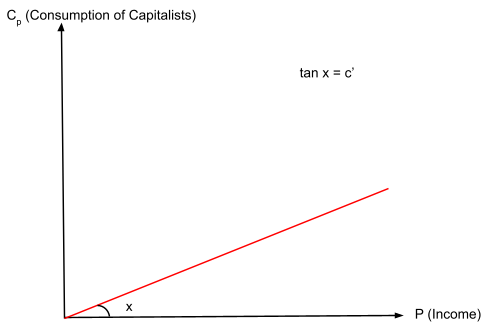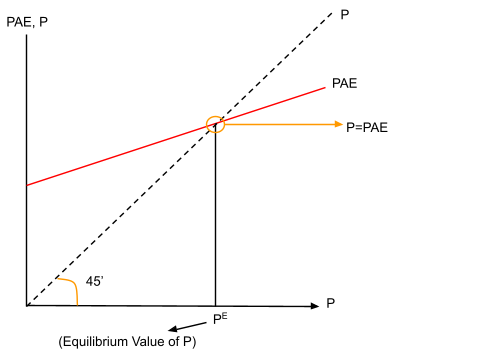Capitalist vs Workers : Elementary Marxian Economics
Usually the subject of economics, as it is taught in school and college, does not tell us much about the other side of the coin. This ‘other side of the coin’ namely refers to the the economic structure of a command economy. We are not really taught how the USSR governed itself or how Cuba does so today. The history of economic thought usually does not allow the losers to have a large say; and often relegates them to footnotes or the like. This is apparently very obvious to see in the case of Marxian economics. We are hardly introduced to theories that criticize Mainstream Economic and advocate Marxist Economics. However there are economic models, that were developed to support the social theory of Marxism.
Michal Kalecki was a polish economist who developed economic theories that anticipated Keynesian idea of the economy. He published in Polish and hence was lesser known. His work also integrated Marxian analysis with mainstream economics. Since Marx did not himself offer an economic model to represent his argument, Kalecki did so in his stead. We remember Kalecki with his famous Theory of Distribution that stems the Marxian argument in a mathematical form. His theory was also one of the earliest theories on the topic. It anticipated further development and study of Macro level distribution. This theory criticises the distribution in a capitalistic scenario.
Kalecki : Macro Distribution
The theory of Marxism brings to our attention a clear division in the labor force. The theory states that society is usually divided into two groups. The entire population is divided into a smaller group of Capitalists (profit earners) and a larger group of Workers (wage earners). The Capitalists own all the capital or physical equipment needed for production and the workers only have their labor to provide. For simplification and focus we consider only a closed economy without a government.
The National Income(Y) is divided into two parts, Wages(W) that accrue to Workers and Profits(P) that accrue to Capitalists. This is the income that the people of the economy obtain for providing productive service.
Y=W+P
Next we explore the Planned Aggregate Expenditure (PAE) or the amount of expenditure the people of the economy would like to spend on goods and services. In a closed economy without a government or a external sector, there can be only two avenues for planned expenditure. One, people will demand goods for direct consumption (immediate use) and two, for investment (future use). Let us observe these two expenditures.
Consumption : Workers and Capitalists
Consumption Expenditure (C) is divided into Worker’s Consumption Expenditure (CW) and Capitalist’s Consumption Expenditure (CP ).
C=Cw +Cp
Here we take a few hints from Marxian Theory and say that the Workers spend everything they earn on Consumption. This arises from the fact that Workers earn little income and are not able to save anything out of that. Since they are unable to save anything and thus invest, everything that they earn is spent on consumption or subsistence. If Sw is the saving of the Workers, we set it to equal zero.
W=Cw + Sw
Sw=0
therefore,
W=Cw
The consumption of the capitalists is a bit more interesting and since they earn relatively higher incomes they are able to save to a certain extent. As we do in traditional Keynesian models, we consider that the consumption expenditure of the Capitalists is a fraction of the total income. We use c’ as the marginal propensity to consume out of income, for the Capitalists.
Cp =c'P
Investment : A Capitalist Concept
Investment in Marxian economics is only carried out only by Capitalists since Workers do not have any savings that they could mobilise. Since only Capitalist’s carry out Investment, it is only they who have complete control over the capital. They are the sole owners of capital. In this simple model, let us assume Investment is fixed. In more advanced models, we can relax this assumption. It is important to understand why Workers do not have capital and why Capitalists do. It is because Workers are unable to save.
I=Ip+Iw
Iw=0
therefore,
I=Ip
Aggregate Planned Expenditures (PAE)
Since we have,
PAE =C+I
or,
PAE=Cw+Cp+Ip
or,
PAE=Cw+c'P+Ip
rearranging,
PAE = Cw+Ip + c'P
A graph pitting PAE against P looks similar to the earlier graph only shifted upwards.
So as one can observe with the red line, as Capitalist Income rises so does the Planned Aggregate Expenditure of the economy.
Equilibrium : The Power of Profits
An equilibrium is a condition under which nobody wants to change their plans. An equilibrium is a state of rest, a place from which change is not possible from within. We will now build a simple argument that tells us under what conditions is the economy in equilibrium
As we observe, each buyer of goods and services is also a seller of inputs (self-labor or capital). And each buyer of inputs is also a seller of goods and services. We realise that someone’s expenditure is another person’s income. Extending this argument to a macro-level we observe that everyone’s income is everyone’s expenditure. And only if this is realised will the economy be in equilibrium.
PAE=Y (equilibrium condition)
therefore,
W+P=Cw+Ip+c'P,
W=Cw,
which leads us to the famous result,
P=Cp+Ip
which basically says that at equilibrium, the capitalists earns what they spend. In contrast to that is the condition of the workers who spend what they earn, all of it. This only goes on to show that capital plays a crucial part in the economy. It also displays the importance of savings which creates the difference between the worker and the capitalist.
P=Ip+c'P (at equilibrium)
Equilibrium P =Ip/(1-c')
This can be represented in the graph in the following way. 
Distribution of Income
At equilibrium, we use q to denote the fraction of the income that goes to the workers and consequently (1-q) to denote the fraction of the income that accrues to the capitalist. We get the following equations. This is dependant on two factors,
- The ‘Mark Up Ratio’ or ‘k’ which is basically the relative share of overhead costs(salaries to managers) to variable costs(labor). There is greater Mark Up if there is a monopoly for the firm. Kalecki claims that since usually most markets are oligopolistic with information asymmetry there is scope for a Mark Up. Since the firm has a dominant position it can pay for factor services below cost and exploit them.
- The proportion of Labor to other variable inputs (eg. raw materials ‘B’) that are involved in the process of production.
P=k(W+B),
j=BW
therefore,
q=1/(1+k(1-j))
Now going back to income distribution, we have the following equations,
W=qY,
W=q(W+P),
q=W/(W+P)
Here we also observe a relationship between W, and P which we can write as,
W=P(1-q)
Here is Kalecki’s amazing insight of how under imperfectly competitive scenario there can be exploitation of workers. Since the capitalists control both k and j, they invariably have influence on the distributional variable q. Since the capitalists invariably determine their own income P by their expenditure. The wages and thus the consumption of the workers that is ultimately in the hands of the capitalists. Kalecki thus explains in a simple mathematical model the ideas of Marx and forms a mathematical critique of competition.
-Pranjal Rawat,
Presidency University
Presidency University
No comments:
Post a Comment